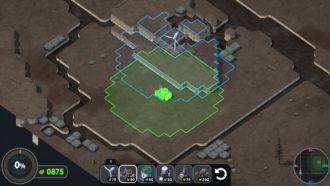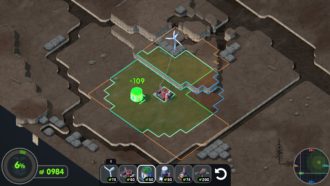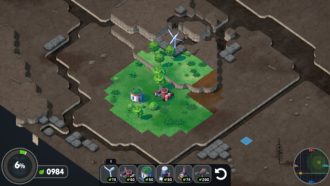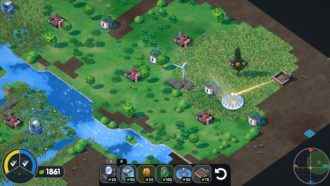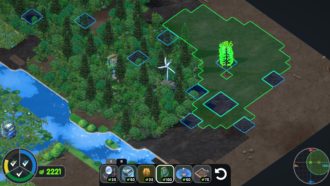Like most city-building games, Terra Nil opens with a completely empty map. Unlike genre stalwarts Sim City or Tropico, however, you’ll finish a game with the map just as empty of buildings as when you found it—and a whole lot greener.
Terra Nil comes to us from publisher Devovler Digital and indie game studio Free Lives, who people may know from their previous releases Broforce, Gorn or Genital Jousting. With Terra Nil’s release date still TBA, we were lucky enough to jump into a preview to check the title out.
Each game of Terra Nil will see you restoring a barren wasteland to vibrant life. You will build machines to clean polluted soil, revive biodiversity, and balance the climate. Then, once the area has healed, you’ll need to pack up all of your equipment and move on. It’s not enough to just improve the landscape; encouraging nature to reclaim the wasteland means leaving none of your machines behind.
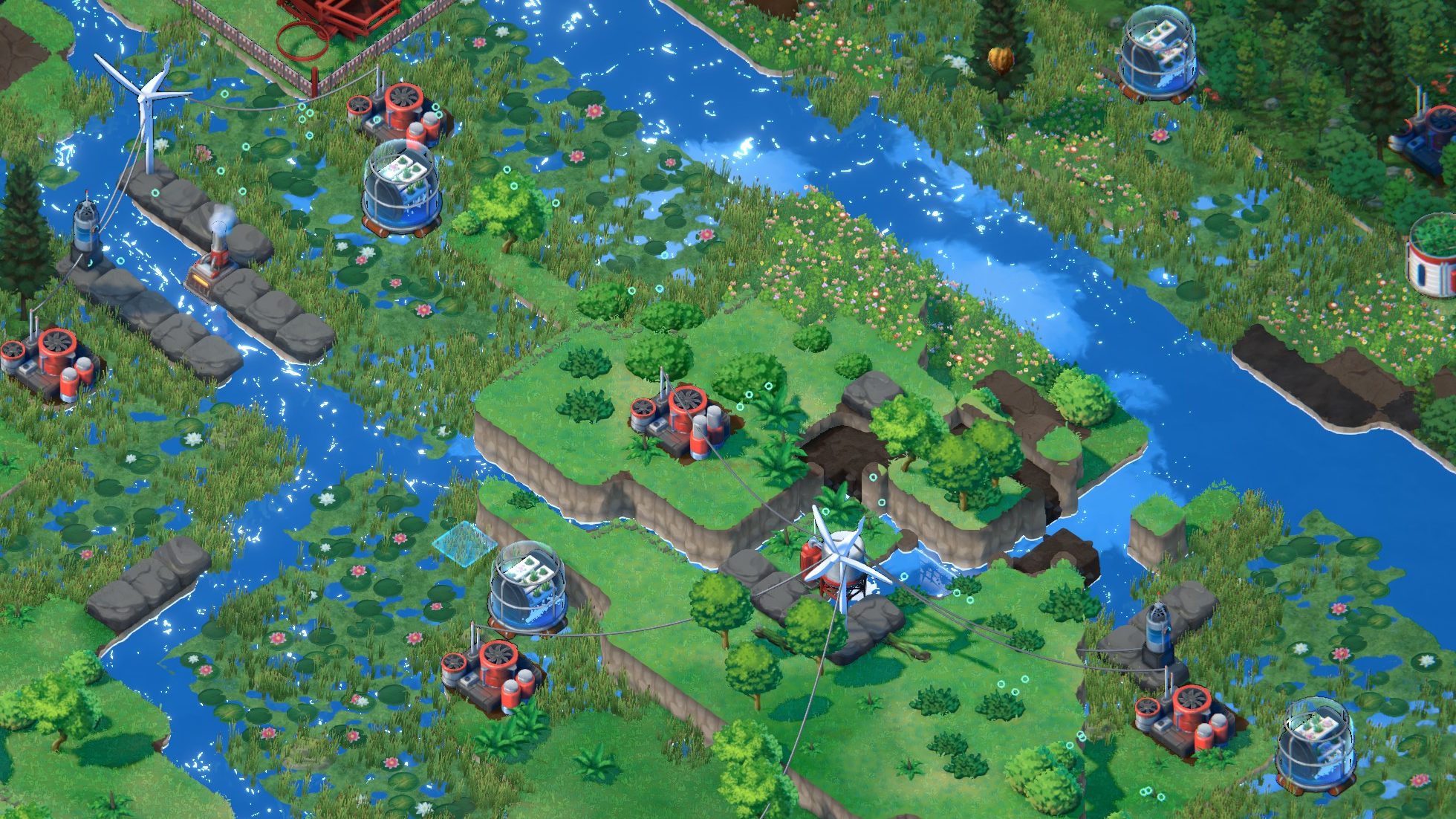
As I played, I developed an appreciation for the game as a relaxation tool. In the demo at least, there’s not much in the way of deeper strategy to sink your teeth into. How you place your structures influences how efficiently you can clean them up later, but you’ll likely master this in your first or second game. The same can be said for resource management, which is spent on machinery and gained from spreading grass, forests, water, and bees.
Although it is possible to run out of resources, keeping a good stockpile is simple—so long as you’re making more green than machine, you should be good. While this leaves the game short on challenges, it does encourage a relaxed approach to your clean-up efforts. Not having to carefully plan every move lets you work on making the wasteland prettier at your own pace.
Every game of Terra Nil proceeds through four phases, each focused on one part of the ecosystem. The first phase of every game is detoxifying soil and growing grass. Beginning with a barren field of dirt and grey water, you’ll place wind turbines to begin energy production. With a supply of electricity in place, your next step is to create toxin scrubbers that convert poisoned earth into fertile soil. From there, hydrating fertile soil with an irrigator will produce grasslands. Completing the first phase requires filling a greenery meter to 100% by growing grass over most of the available map space.
Once phase one is complete, the biodiversity phase begins. This second phase has three meters to represent forest, wetland, and bees population. Bees are easily managed by placing hives in trees, while wetlands can be made by upgrading irrigators placed near water. Planting forests is what makes this phase risky. Forests can only be planted on ash, which is made by burning down your own buildings. Fire spreads quickly, so it’s best to plan before starting one rather than scramble to save buildings when flames spread too far.
After you complete the first two phases, the final phases are unlocked simultaneously. These phases are balancing the climate and removing all your buildings. Balancing the climate requires using machines to adjust humidity and temperature until they’re suitable for sustained life. You can track your progress towards this by a counter in the lower right that indicates the current humidity and temperature as well as a “green zone” to aim for. Your best indication that you’ve got it just right is to wait for rain; once you hit the green zone the map will be soaked in a downpour that automatically irrigates most remaining dirt tiles.
With the climate balanced, your last duty is to pack up all the machinery used to restore the wasteland. Your goal is to build an airship from recycled parts and a drone to collect your recycling. Recycling is made by placing silos that gather all surrounding machinery into them and wait for pickup. Silos themselves can be claimed at waterways with loading docks that automatically pack themselves and the silo up when passed by a drone. Silos can also be picked up with other silos, a method that feels somewhat like building green-conscious matryoshka dolls.

Once you’ve salvaged every building and loaded all your recycling onto the drone, your airship will be completed. A satisfyingly big and red LAUNCH button is the last thing you press to end the game, causing your airship to take off and collect its drone on the way off-screen. You’ll see the parting message “Wasteland Reclaimed” before the camera pulls out to show a dead, grey world with a single point of green made by you.
I went into Terra Nil without much information. At first, the draw for me was seeing the game’s beautifully styled landscapes. Seeing the grey and brown wasteland given new life is both refreshing and oddly beautiful. With real-world environmental catastrophe a real possibility in our future, it’s a nice change of pace to see a dead world restored. There’s a bleak fantasy in having the power to personally reverse total ecological collapse. While this isn’t a game that will challenge your strategy or problem-solving skills, the relaxed pace and beautiful visuals make it a perfect game for unwinding while you listen to a podcast or just give your mind a well deserved rest. Terra Nil fits perfectly on any list of chill-out games. If you’re like me, the current state of just about everything is a compelling reason that seeing more and more relaxing games come out is a really good thing.
You can find Terra Nil on Steam.
